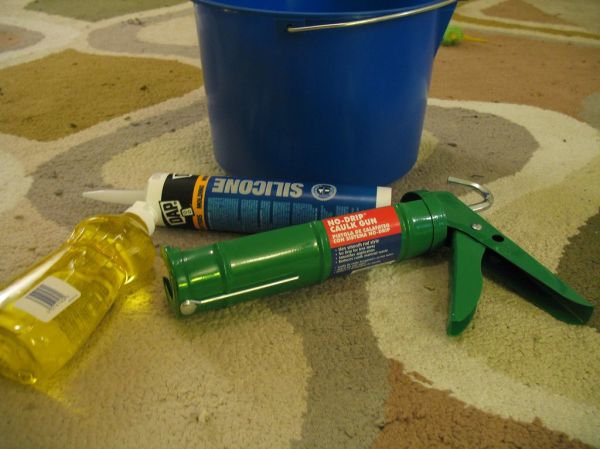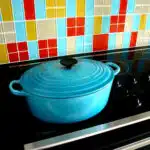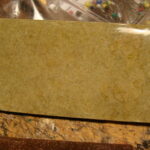Welcome to the world of silicone cleaning. As a cleaning expert, I know that keeping your silicone products clean and fresh can be a challenge. Whether it’s your kitchen appliances or bathroom fixtures, silicone is a popular material that requires special care to maintain its pristine appearance and performance.
Silicone is known for its versatility, durability, and resistance to high temperatures. However, it can easily accumulate dirt, grime, and residue over time. To ensure the longevity of your silicone products, you need to learn how to properly clean and maintain them. In this article, I will share with you some tips and tricks on how to effectively clean silicone materials using common household items that you may already have in your pantry. So let’s get started!
Understanding The Properties Of Silicone
Silicone has become a popular material in various industries because of its unique properties. Understanding silicone properties is crucial to effectively clean it. One of the main benefits of using silicone products is its durability. It can withstand high temperatures, extreme weather conditions, and chemicals, making it ideal for long-term use.
Another significant property of silicone is its non-stick nature. This characteristic makes it an attractive choice for kitchenware such as baking sheets, molds, and spatulas. Silicone’s flexibility also makes it a preferred material for medical devices like catheters and implants. Because of its inertness and hypoallergenic qualities, silicone poses less risk of adverse reactions than other materials.
Silicone comes in different forms and variations, each with specific uses and properties that require different cleaning methods. Identifying these types of silicone products before cleaning them will help ensure effective cleaning without damaging the material. Understanding the properties of silicone remains the foundation for achieving a successful outcome when cleaning these products.
Identifying Different Types Of Silicone Products
Understanding the Properties of Silicone is crucial before attempting to clean it. Differentiating the various applications of silicone is important as different types of silicone may require different cleaning methods. For example, food-grade silicone used in kitchen utensils and bakeware may require a gentler approach compared to high-temperature resistant silicone used in industrial applications.
When cleaning silicone, it is important to use the correct cleaning method. For instance, abrasive cleaners, bleach, and solvents should be avoided as they can damage the surface of silicone products. Instead, mild dish soap or vinegar diluted with water can be used to effectively clean most types of silicone without causing any harm.
Identifying Different Types of Silicone Products can be challenging but it is essential for determining the right cleaning approach. Some common types of silicone products include sealants, adhesives, lubricants, and coatings. Each type requires specific care during cleaning as using the wrong method could result in damage to the product or reduced effectiveness over time. By understanding the characteristics and uses of each type of silicone product, you can choose an appropriate cleaning method that will ensure your products remain in good condition for longer.
When it comes to preparing your cleaning supplies for cleaning silicone products, there are a few things you should keep in mind. Firstly, ensure that any cloth or sponge used is clean and free from debris that could scratch or damage the surface of your silicone product. Additionally, prepare a solution of mild dish soap or vinegar diluted with water before beginning to clean your product. Once you have all your supplies ready and have identified which type of silicone product you are dealing with, you can proceed confidently knowing that you are well equipped to tackle any messes that come your way.
Preparing Your Cleaning Supplies
- When cleaning silicone, it is important to first gather the necessary supplies, such as a soft cloth, water, and a cleaning product that is specifically formulated for silicone.
- It is important to select a cleaning product that is specifically designed to safely and effectively clean silicone.
- Before beginning the cleaning process, it is important to prepare the cleaning area by ensuring that it is free from dust, dirt, and other debris.
- It is also important to ensure that the cleaning product is properly mixed with water according to the instructions on the product label.
- When cleaning silicone, it is important to use only a soft cloth and cleaning product. Abrasive materials should not be used as they can damage the surface of the silicone.
- It is important to thoroughly rinse the silicone after cleaning to ensure that any residue from the cleaning product is removed.
Gather Cleaning Supplies
Preparing your cleaning supplies is an essential step in the silicone cleaning process. Before you start, gather all the necessary tools and equipment to achieve a successful outcome. Organizing supplies can help you save time and avoid unnecessary trips back and forth to get what you need. You will need a few household items that are readily available for purchase at your local store.
To begin with, ensure that you have gloves and safety glasses to protect yourself while handling the cleaning agents. Silicone cleaners may contain harsh chemicals that can cause skin irritation, respiratory problems, or eye damage if not handled correctly. In addition, you will need a soft-bristled brush or sponge, a bucket of warm water, dish soap, white vinegar, baking soda, and rubbing alcohol. These products are effective in removing dirt, grime, stains, and odor from silicone surfaces.
Lastly, once you have finished cleaning your silicone surfaces with these supplies, it is important to dispose of them properly. Do not pour any leftover cleaning solution down the drain as it may harm aquatic life or corrode pipes over time. Instead, pour it into a sealable container and label it as hazardous waste before disposing of it at a designated facility near you. Proper disposal of used cleaning supplies helps prevent environmental pollution and ensures everyone’s safety in your community.
Choose Cleaning Product
When preparing your cleaning supplies for silicone cleaning, it is essential to choose effective products that can effectively remove dirt, grime, stains, and odor from silicone surfaces. Silicone cleaners come in various types and brands, each with its unique features and benefits. As a silicone cleaning expert, I recommend choosing a product that is specifically designed for silicone surfaces. Avoid using abrasive or harsh chemicals that can damage the material or cause discoloration.
When selecting a cleaning product, consider eco-friendly options that are safe for the environment and human health. Look for products with natural ingredients such as citrus extracts or plant-based surfactants. These products are biodegradable and do not contain harmful toxins or chemicals that may harm aquatic life or pollute waterways. Additionally, choosing eco-friendly options helps promote sustainability and reduces your carbon footprint.
In conclusion, choosing the right cleaning products is crucial when preparing your cleaning supplies for silicone cleaning. By selecting effective and eco-friendly options, you can achieve a successful outcome while minimizing environmental impact and promoting sustainability. Always read the label instructions carefully before using any product to ensure proper handling and disposal of leftover materials.
Prepare Cleaning Area
As a silicone cleaning expert, preparing your cleaning supplies for silicone cleaning is essential to ensure that you achieve a successful outcome. One critical aspect of this preparation is to clear the surface and prepare the area where you will be working. This step helps prevent any accidents or damage that may occur during the cleaning process. Before starting, make sure that the surface is free from any objects or debris that may interfere with your work.
Another important consideration when preparing your cleaning area is to use protective gear. Protecting yourself from harmful chemicals and substances is crucial in ensuring your safety and well-being. Wear gloves, goggles, and masks as necessary to minimize exposure to harsh chemicals or fumes. Additionally, make sure that there is adequate ventilation in the area where you will be working.
In summary, preparing your cleaning supplies for silicone cleaning involves several critical steps, including clearing the surface and using protective gear during the process. These steps help ensure safety and minimize risks while achieving a successful outcome. As a silicone cleaning expert, always prioritize safety and take precautionary measures necessary to protect yourself while serving others through your expertise.
Removing Dirt And Grime From Silicone
Silicone is a popular material for various household items, including kitchen utensils, bakeware, and bathroom accessories. However, due to its sticky nature, it tends to accumulate dirt and grime over time. Fortunately, there are several silicone cleaning hacks that can help you remove dirt and grime effectively.
Firstly, an eco-friendly cleaning solution that works well for removing dirt from silicone is vinegar. Mix equal parts of white vinegar and water in a spray bottle and apply the solution to the affected area. Let it sit for 10-15 minutes before wiping it off with a clean cloth or sponge. Alternatively, you can use baking soda as a natural abrasive cleaner by mixing it with water to form a paste. Apply the paste to the dirty silicone surface and leave for 10-15 minutes before rinsing off with warm water.
Another effective method for removing grime from silicone is by using dish soap. Simply mix a few drops of dish soap with warm water in a bowl or sink and soak the silicone item for 10-15 minutes before scrubbing gently with a soft-bristled brush or sponge. Rinse thoroughly with warm water and allow the item to air dry.
In summary, removing dirt and grime from silicone can be accomplished using simple yet effective cleaning solutions such as vinegar, baking soda, and dish soap. By utilizing these eco-friendly methods, you can keep your silicone items looking clean and fresh without harming the environment.
Transition: Now that we’ve covered how to remove dirt and grime from silicone using eco-friendly solutions let’s move on to tackling stubborn stains for more challenging cleaning tasks.
Tackling Stubborn Stains
Removing grease from silicone may seem like a daunting task, but it can be done effectively with the right tools and techniques. One effective method is to use a mixture of baking soda and water to create a paste. Apply the paste to the greasy area and let it sit for 15-20 minutes before rinsing with warm water. This technique works because baking soda is an excellent natural abrasive that can help break down grease without scratching or damaging the surface of the silicone.
Combating discoloration in silicone can also be challenging, especially if the stain has been left untreated for an extended period. However, there are several methods you can try to remove these stubborn stains. One option is to use white vinegar and baking soda to create a cleaning solution. Apply this solution directly onto the stained area and let it sit for at least 30 minutes before rinsing with warm water. Another method involves using hydrogen peroxide and baking soda to create a similar cleaning solution.
Dealing with mold and mildew in silicone requires a different approach than removing stains or grease buildup. The best way to prevent mold growth is to keep your silicone surfaces dry after each use. However, if you do notice mold or mildew on your silicone surfaces, you can use a mixture of vinegar and water or hydrogen peroxide and water in equal parts as an effective cleaning solution. Be sure to completely dry the surface after cleaning to prevent future mold growth.
Dealing With Mold And Mildew
Mold and mildew are common problems that can be found in many households, particularly in areas where there is high humidity or moisture. When it comes to silicone cleaning, preventing mold and mildew should be a top priority as they can cause discoloration and damage to the material. To prevent mold and mildew from growing on your silicone items, it is important to keep them clean and dry at all times.
One of the best ways to prevent mold and mildew growth in your home is by ensuring proper ventilation. Good ventilation allows for air circulation, which helps to reduce moisture levels in the air. This can be achieved by opening windows or doors, using exhaust fans when cooking or bathing, or installing a dehumidifier if necessary. Proper ventilation not only helps prevent mold growth on your silicone items but also improves the overall air quality in your home.
If you do discover mold or mildew growing on your silicone items, it is important to take immediate action to remove it. To do this, you can use a mixture of vinegar and water or a commercial mold and mildew cleaner. Apply the solution to the affected area, let it sit for a few minutes, then scrub with a soft-bristled brush before rinsing thoroughly with water. Remember to always wear gloves when working with cleaning solutions.
- A damp environment is an ideal breeding ground for mold and mildew.
- Mold spores can spread quickly if not properly removed.
- Regular cleaning and maintenance of silicone items will help prevent future mold growth.
Moving onto cleaning silicone kitchen appliances…
Cleaning Silicone Kitchen Appliances
As the old saying goes, a clean kitchen is a happy kitchen. This is especially true when it comes to your silicone kitchen appliances. Sanitizing silicone may seem like a daunting task, but with the right approach and techniques, you can easily remove any dirt or grime that may have accumulated.
To begin cleaning your silicone kitchen appliances, start by wiping down the surface with warm water and soap. Be sure to use a non-abrasive sponge or cloth to avoid damaging the silicone. Once you have removed any visible stains or debris, rinse the area thoroughly with water and dry it off with a clean towel.
If you find that your silicone appliance has an unpleasant odor, don’t worry! You can easily remove odors by soaking the item in a mixture of white vinegar and warm water for 30 minutes. After soaking, rinse the item thoroughly with water and allow it to air dry completely before using it again.
Maintaining your silicone bakeware is essential to ensure its longevity. In our next section, we will explore some tips and tricks on how to properly care for your silicone bakeware so that you can continue enjoying them for years to come without worrying about damage or deterioration.
Maintaining Your Silicone Bakeware
- Silicone bakeware is a great option for cooking and baking due to its non-stick properties and ease of cleaning.
- Cleaning silicone bakeware is relatively simple and involves washing with warm, soapy water and a non-abrasive scrubber.
- To prevent staining, it is important to avoid scouring the surface of the bakeware or using harsh detergents and scrubbers.
- To make cleaning easier, it is recommended to soak the silicone bakeware in soapy water for a few minutes before washing.
- To extend the life of your silicone bakeware, storing it with a lid or in an airtight container is recommended.
- Lastly, silicone bakeware should be dried thoroughly after cleaning to prevent water spots and mildew growth.
Cleaning Silicone
Silicone bakeware has become an essential item in every kitchen. It is durable, flexible, and non-stick, making it a favorite among bakers. But with regular use, silicone bakeware can develop stains and residue that can be challenging to remove.
Fortunately, there are several silicone cleaning hacks that you can use to keep your bakeware looking like new. One of the best ways to clean silicone is by using warm soapy water. Make sure to use a mild detergent and a non-abrasive sponge or cloth to avoid damaging the surface of your silicone bakeware.
If you’re dealing with tough stains or residue, you can try using baking soda or vinegar as a natural cleaner. Baking soda is effective in removing grease and stains while vinegar breaks down mineral deposits and disinfects surfaces. You can mix these two ingredients to create a paste and apply it directly to the affected area for best results.
When cleaning silicone bakeware, it’s essential to avoid harsh chemicals or abrasive cleaners as they can damage the material’s surface. Instead, opt for mild detergents or natural cleaners like baking soda or vinegar. By following these simple silicone cleaning tips, you’ll be able to maintain your bakeware’s quality for years to come!
Storing Silicone
Proper storage is essential in maintaining the quality of your silicone bakeware. You want to make sure that it is stored correctly so that it doesn’t get damaged or deformed over time. One of the best ways to store silicone bakeware is by stacking them on top of each other. This method helps save space and keeps your bakeware organized.
When stacking your silicone bakeware, make sure to place a piece of parchment paper or a silicone mat between each layer to prevent them from sticking together. You can also hang your bakeware using hooks or racks if you have limited space in your kitchen. Just make sure that they are not exposed to direct sunlight or extreme temperatures, as this can damage the material.
In addition to proper storage, there are other maintenance techniques that you can do to keep your silicone bakeware in good condition. For instance, avoid using sharp objects like knives or scissors when cutting food directly on the surface of your silicone mats or baking sheets. Doing so can cause cuts and scratches that will eventually lead to tears in the material. Instead, use a cutting board or plate as a protective barrier when slicing food on top of your silicone bakeware.
Overall, proper storage and maintenance techniques are crucial in keeping your silicone bakeware looking great for years to come. By following these tips and tricks, you’ll be able to enjoy hassle-free baking without the worry of damaging your beloved kitchen tool!
Preventing Stains
Silicone bakeware is a popular choice for many home cooks due to its non-stick properties, durability, and flexibility. However, one problem that users may encounter over time is discoloration or staining on their silicone bakeware. Preventing discoloration is essential in maintaining the quality and appearance of your silicone bakeware.
To prevent stains from forming on your silicone bakeware, it’s crucial to avoid using harsh cleaning chemicals that can damage the material. Instead, opt for mild soap and warm water to clean your silicone bakeware after each use. If you need to remove stubborn stains, mix equal parts baking soda and water to form a paste and apply it to the affected area with a soft cloth. Let it sit for 10-15 minutes before rinsing with warm water.
Another way to prevent staining is by avoiding contact with highly pigmented foods such as tomato sauce or beets. These types of foods can cause discoloration if left in contact with the silicone for an extended period. To prevent this from happening, always use a protective barrier like parchment paper or aluminum foil when cooking or storing these types of foods in your silicone bakeware. By taking these simple steps, you can keep your silicone bakeware looking like new for years to come!
Cleaning Your Silicone Bathroom Fixtures
Silicone bathroom fixtures have become increasingly popular due to their durability and resistance to water damage. However, keeping them clean can be a challenge, especially when it comes to cleaning silicone caulk and maintaining silicone showerheads. Here are some tips for effectively cleaning your silicone bathroom fixtures.
To clean silicone caulk, start by wiping down the surface with warm water and soap. Then, use a mixture of equal parts white vinegar and water to remove any mold or mildew. Apply the mixture to the surface with a soft-bristled brush and let it sit for at least 30 minutes before rinsing off with warm water. For tougher stains, you can also try using a paste made from baking soda and water.
Maintaining your silicone showerhead is also important for keeping it clean and functioning properly. Start by removing the showerhead from the wall and soaking it in a mixture of warm water and white vinegar for at least an hour. Then, use a toothbrush or soft-bristled brush to scrub away any remaining buildup or debris. Rinse thoroughly with warm water before reattaching to the wall.
By following these tips, you can keep your silicone bathroom fixtures looking like new for years to come. In the next section, we will discuss how to keep your silicone phone case clean and free from damage.
Transition: Now that we’ve covered how to clean your bathroom fixtures, let’s move on to another important topic – keeping your silicone phone case in top condition.
Keeping Your Silicone Phone Case Clean
- Proper cleaning and maintenance of silicone phone cases can help extend their longevity and ensure they remain clean and hygienic.
- To remove dirt and debris, gently rub the surface of the silicone with a soft cloth and warm, soapy water.
- To provide a deeper clean, use a moistened cotton swab to wipe down the surface of the phone case and then let dry.
- To sanitize, use a mild rubbing alcohol solution and a microfiber cloth to wipe down the phone case, then rinse with warm water and let dry.
- Avoid using abrasive cleaning products or scrubbing the case too harshly, as this can cause damage to the silicone material.
- Ensure the phone case is completely dry before re-installing, to prevent the buildup of moisture or bacteria.
Removing Dirt
Picture this: your silicone phone case has been through a lot – it’s been dropped, scratched, and exposed to all sorts of dirt and grime. But fear not, as a silicone cleaning expert, I am here to guide you on how to remove the stubborn dirt from your phone case.
Using cleaning agents is an effective way to get rid of dirt on your silicone phone case. You can opt for mild soap and water or a specialized cleaning solution that is specifically formulated for silicone materials. When using these cleaning agents, make sure to dilute them with water first before applying them onto the surface of the phone case. This will prevent any damage to the material.
Scrubbing techniques are also important in removing dirt from your silicone phone case. Use a soft-bristled brush or microfiber cloth to gently scrub the surface of the phone case in circular motions. Avoid using abrasive materials such as steel wool or rough sponges as they can cause scratches on the surface of the material. By following these simple steps, your silicone phone case will look brand new in no time!
Wiping Down
Another effective way to keep your silicone phone case clean is through wiping down. This method is particularly useful for removing light dirt and dust on the surface of the material. To do this, you can use a soft cloth or microfiber towel that is dampened with water or a cleaning solution. Gently wipe down the surface of the phone case in a circular motion, ensuring that you cover all areas.
When using cleaning agents for wiping down your silicone phone case, it’s important to avoid using harsh chemicals such as bleach or ammonia-based products. These substances can cause damage to the material and may even discolor it over time. Instead, opt for mild soap and water or specialized cleaning solutions that are specifically designed for silicone materials.
To prevent damage when wiping down your silicone phone case, make sure to avoid using excessive force when scrubbing the surface of the material. Also, be careful not to apply too much pressure on any one area as this can cause scratches or dents on the surface. By following these guidelines and incorporating wiping down into your regular cleaning routine, you can effectively keep your silicone phone case looking brand new for longer periods of time.
Sanitizing
As a silicone cleaning expert, it is important to understand different methods of sanitizing your phone case. Sanitizing involves eliminating bacteria and other harmful microorganisms that may be present on the surface of your phone case. One way to achieve this is by using disinfectant wipes or sprays that are specifically designed for electronic devices. These products contain ingredients such as alcohol or hydrogen peroxide which effectively kill germs without causing damage to the silicone material.
When choosing the right cleaning products for sanitizing your silicone phone case, it’s crucial to avoid harsh chemicals that can damage the material. Instead, look for products that are gentle yet effective in eliminating germs. You can also opt for natural alternatives such as vinegar or tea tree oil which have antibacterial properties and are safe to use on silicone materials.
To properly sanitize your silicone phone case, start by wiping down any visible dirt or grime with a damp cloth. Next, spray or apply the disinfectant solution onto the surface of the case and allow it to sit for a few minutes before wiping it off with a clean towel. Repeat this process at least once a week to ensure that your phone case remains free from harmful bacteria and other germs. By incorporating these sanitizing methods into your regular cleaning routine, you can keep your silicone phone case looking clean and brand new for longer periods of time while also protecting yourself from harmful pathogens.
Cleaning Your Silicone Watch Strap
As we discussed in the previous section, keeping your silicone phone case clean is important not only for aesthetic reasons but also for hygiene purposes. Similarly, cleaning your silicone watch strap is crucial to maintain its longevity and prevent any skin irritation caused by sweat build-up. Sweat stains on silicone are quite common, especially on watch straps, as they come into direct contact with our skin.
Cleaning silicone jewelry may seem like a daunting task, but it’s actually quite simple. Start by mixing warm water with some dish soap in a bowl. Gently scrub your jewelry using a soft-bristled toothbrush or cloth, making sure to reach all the crevices. Rinse thoroughly under running water and dry with a clean towel. Avoid using harsh chemicals or abrasive materials that can damage the surface of your jewelry.
Removing sweat stains from silicone watch straps requires a bit more effort. Begin by creating a solution of equal parts water and white vinegar in a bowl. Soak your watch strap in the mixture for about an hour before gently scrubbing it with a soft-bristled brush or cloth. Rinse thoroughly under running water and dry with a clean towel. Alternatively, you can use baking soda instead of vinegar; simply mix it with some water to form a paste and apply it directly to the stain before scrubbing.
- Use mild dish soap when cleaning silicone.
- Avoid using harsh chemicals that can damage the surface.
- Create a solution of equal parts water and white vinegar to remove sweat stains from watch straps.
- Baking soda can also be used as an alternative.
As we move onto our next topic, removing pet hair from silicone surfaces such as phone cases and keyboard covers can be quite challenging. Pet hair has a tendency to stick to anything due to static electricity, making it difficult to remove even with regular wiping or brushing. However, there are some simple tricks that you can use to get rid of pet hair from your beloved silicone items without causing any damage.
Removing Pet Hair From Silicone
When it comes to removing pet hair from silicone surfaces, there are a few methods that work quite well. One popular option is to use a lint roller, which can quickly and easily remove pet hair from your silicone products. Simply roll the lint roller over the surface of the silicone, pressing firmly to ensure that all of the hair is picked up. Repeat as needed until all of the hair is gone.
Another effective way to remove pet hair from silicone is by using a vacuum cleaner with an upholstery attachment. The suction power of the vacuum will help to lift and remove any loose hairs on your silicone surfaces. Be sure to use a gentle touch so as not to damage or scratch the silicone. If you do not have an upholstery attachment for your vacuum cleaner, you can also try using a crevice tool or brush attachment instead.
Finally, if all else fails, you can always resort to using tape to remove pet hair from your silicone products. Simply wrap some clear packing tape around your hand with the sticky side facing outwards, then press it firmly onto the surface of the silicone and lift away any hairs that stick. This method may take a bit longer than others, but it can be very effective at removing stubborn hairs that won’t come off with other methods.
By regularly using one of these pet hair removal methods on your silicone products, you can prevent buildup and keep them looking clean and fresh for longer periods of time. In addition to these cleaning methods, it is also important to store your silicone products properly in order to maintain their quality and cleanliness over time.
Storing Your Silicone Products
One common concern among people who own silicone products is how to properly store them. Some may worry that storing their silicone products in a certain way could damage them or reduce their longevity. However, with proper storage techniques, you can ensure that your silicone products remain in good condition for years to come.
Proper storage of silicone products involves keeping them away from direct sunlight and heat sources. This is because exposure to high temperatures can cause the structure of the silicone to break down over time, reducing its effectiveness. Additionally, it’s important to store your silicone products in a cool, dry place to prevent moisture buildup that could lead to mold growth.
Another key aspect of proper silicone storage is avoiding contact with other materials, especially those that are sharp or abrasive. This is because sharp or abrasive materials can scratch or puncture the surface of the silicone, leading to damage over time. Instead, consider storing your silicone products separately in a designated container or drawer.
By following these simple tips for proper storage of your silicone products, you can help extend their longevity and keep them in good condition for years to come. In the next section, we will discuss some additional tips for preventing stains on your silicone items.
Tips For Preventing Silicone Stains
After properly storing your silicone products, it is important to know how to clean them. Silicone is a durable and non-stick material that is commonly used in kitchenware and personal care products. However, over time, it can become discolored and accumulate grease buildup if not cleaned properly.
Preventing discoloration on silicone products can be achieved by avoiding exposure to direct sunlight or high heat sources such as ovens or stovetops. Additionally, using non-abrasive cleaning tools such as soft sponges or cloths will prevent scratching or damaging the surface of the silicone. To remove grease buildup, a mixture of warm water and mild dish soap can be used. It is important to avoid using harsh chemicals such as bleach or abrasive scrubbers as they can damage the silicone.
Other tips for cleaning silicone include:
- Boiling: Boiling silicone products for a few minutes in water can help remove tough stains and disinfect the item.
- Vinegar: A mixture of vinegar and water can be used to remove mineral deposits from silicone surfaces.
- Baking soda: For stubborn stains, mixing baking soda with water or vinegar to form a paste can help lift the stain before wiping it away.
- Dishwasher safe: Check if your silicone product is dishwasher safe before washing it in the dishwasher.
- Air dry: Allow your silicone product to air dry completely before storing it away.
As a silicone cleaning expert, I recommend following these tips for proper cleaning and maintenance of your silicone products. By preventing discoloration and removing grease buildup, you will extend the lifespan of your items while also ensuring their cleanliness and safety for use. In the next section, we will address frequently asked questions about cleaning silicone.
Frequently Asked Questions About Cleaning Silicone
Silicone is a popular material used in many household items, including kitchen utensils, bakeware, and sex toys. However, cleaning silicone can be a challenge for many people. There are several myths about silicone cleaning that need to be dispelled to ensure that you clean your silicone products effectively.
One of the most common myths about silicone cleaning is that you cannot use soap or other cleaning agents on it. This is not true. In fact, using soap and water is one of the best ways to clean silicone. You can use mild dish soap and warm water to wash your silicone products. Rinse them thoroughly with clean water and dry them with a soft cloth.
Another myth about silicone cleaning is that you should avoid using hot water or placing it in the dishwasher. While it’s true that extreme temperatures can damage some types of silicone, most products are heat-resistant and safe for use in the dishwasher. To be sure, always check the manufacturer’s instructions before putting your silicone product in the dishwasher.
To emphasize the importance of proper cleaning practices for silicone products, consider this table:
| Best Practices for Cleaning Silicone Toys | Do’s | Don’ts |
|---|---|---|
| Do wash your toy with mild soap and water after each use | Don’t boil or microwave your toy | |
| Do store your toy in a cool, dry place away from direct sunlight | Don’t use harsh chemicals like bleach or rubbing alcohol | |
| Do inspect your toy regularly for signs of wear and tear | Don’t share your toy without properly sanitizing it first |
By following these best practices for cleaning and maintaining your silicone toys, you can ensure that they remain hygienic and last longer.
Remember to always refer to the manufacturer’s instructions when cleaning any type of silicone product. By avoiding common myths about silicone cleaning and following best practices, you can keep your silicone items looking and functioning their best for years to come.
Conclusion
Silicone is a versatile material that has become increasingly popular in the production of household items. It is non-toxic, easy to clean, and durable. However, it can be challenging to clean if you don’t know how to go about it. As an expert in silicone cleaning, I have shared valuable insights on how to effectively clean and maintain silicone products.
Firstly, understanding the properties of silicone is crucial in determining the best approach for cleaning it. Secondly, identifying different types of silicone products can help you choose the most appropriate cleaning method. Preparing your cleaning supplies is also essential before embarking on the cleaning process.
Removing dirt and grime from silicone involves using mild dish soap and warm water or vinegar solution for tougher stains. Tackling stubborn stains requires a combination of baking soda and vinegar or specialized cleaners that are safe for use on silicone surfaces.
Pet hair can be removed from silicone by using a lint roller or duct tape wrapped around your hand with the sticky side facing outwards. Finally, storing your silicone products appropriately will ensure they remain clean and last longer.
In conclusion, learning how to clean different types of silicone products will not only keep them looking new but also extend their lifespan. Being knowledgeable about preventing common stains such as oil-based ones can save you time and money in the long run. Remember always to follow manufacturer instructions when cleaning silicone products to avoid damaging them inadvertently.
Image Credits
- “getting ready to make a silicone mold” by Rakka (featured)





























